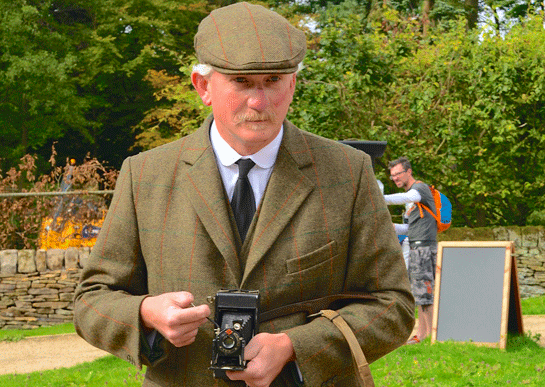I’ve always been interested in history, Whether it be the Romans, ancient Greece or early polar exploration, I do love researching the acts of our predecessors. My international travels have allowed me to see ancient sites across the world, but there is much history in the UK, and a great deal in climbing, mountaineering and adventure…
As part of A Gritstone Day Out, I was asked to lead a walk through the beautiful Longshaw Estate in Derbyshire, recounting the history of gritstone climbing in the UK. The estate itself was originally owned by the Duke of Rutland, but was sold in 1927 for £14,000. Seems a snip when you consider an average house today will cost you over £180,000..! The buildings were used as a hospital during the Great War and now the estate is managed and run by the National Trust.
The sun graced the skies, enlightening the moors and their purple layer of heather. Autumn is such a wonderful time of year in the Dark Peak. Bright colours contrast against the dark and forbidding millstone grit which stands as outcrops or cliffs across the landscape. I delight in sitting, surrounded by silence on the moors when I can.
Armed with my grandfathers pocket watch and camera I led the walk down Padley Gorge, through Bolehill Quarry and onto Lawrencefield. It was here that I first climbed on grit over 25 years ago with friends from Sheffield. Fingers and toes are extremely useful on Gritstone and I prefer to scramble these days, rather than climb technical routes. I’ve worn enough of my digits away already..!
W.P Haskett Smith wrote in his 1894 ‘Climbing in the British Isles’ guide that Derbyshire as ‘not really a climbers country’. He thought that grit ‘assumes strange, grotesque forms, and, when it offers a climb, ends it off abruptly, just as one thinks the enjoyment is about to begin.’ Well, even the 1st ascender of Napes Needle can be wrong…
Walking in full tweeds brought its fair share of comments, and it was very warm, but it was the garb of its day. It was hard-wearing, wind and waterproof and classed as country wear (Johnny Dawes thought I’d been to a fancy dress shop), Shirts and ties were obligatory as were hats. There was no such thing as Goretex, Pertex, a harness, helmet or sticky rubber boots. Protection was wooden wedges or knotted rope slings. Metal pitons came later, but hemp rope tied around your waist was your only salvation if you fell. Not an exciting prospect as it often caused severe back injuries (although its better than decking out).
These early climbs were not technical by todays standards, the the consequences of injury were much worse. There were no Mountain rescue Teams, no mobile phones and approach by road was minimal. Breaking a bone could have been fatal, whilst decking out would almost certainly have been.
Heading back towards Longshaw, I stopped at Surprise View. This bend in the road is where the Hope Valley really opens up, hence its name. The path has been surfaced to allow easier access for wheelchair users, a project I was involved in over 10 years ago. It’s not an easy approach, but well worth the effort.
By the time we returned to Longshaw the evening was setting in. The day ended with four legends of British Gritstone climbing speaking about their experiences to a packed house. James McHaffie, Johnny Dawes, Katy Whittaker and Ben Bransby recounted the scary climbs, huge exposure and wonderful excitement of climbing on Grit. It was for me, a distant memory of days gone by, when I ventured a little into this world. Mountaineering will keep me busy now…
Huge thanks to Claire Jane Carter and The National Trust for organising the event and to Chris Kelly for the Image in this blog.
